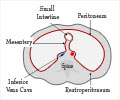An animal study by researchers at Beth Israel Deaconess Medical Center (BIDMC) has helped explain the origins of cardiac fibrosis, a stiffening of the heart muscle that leads to a
An animal study by researchers at Beth Israel Deaconess Medical Center (BIDMC) has helped explain the origins of cardiac fibrosis, a stiffening of the heart muscle that leads to a variety of cardiac diseases, most notably heart failure.
The study has also demonstrated that a bone morphogenic molecule known as rhBMP7 can reverse the cardiac fibrosis process."Heart disease is the number-one cause of death in the Western world," Nature magazine quoted the study's lead author, Dr. Elisabeth Zeisberg, as saying.
"And most people who suffer from heart disease have developed scarring of the heart tissue, known as fibrosis," added Zeisberg who is a scientist in the Division of Matrix Biology at BIDMC, and an Instructor of Medicine at Harvard Medical School (HMS).
Fibrosis develops when the body's natural wound-healing process goes awry. Under normal conditions, specialized cells known as fibroblasts deposit layers of collagen protein to form a scar and thereby enable wounds to heal.
However, in abnormal circumstances, excessive production of matrix proteins, such as collagen, results in fibrosis. In the heart, the build-up of matrix leaves the organ stiff and inflexible, unable to properly relax and function.
"Fibrosis can develop in any organ in the body. While it's known that fibroblast cells are responsible for cardiac fibrosis, the source of these fibroblasts has remained unknown until now," explains Zeisberg.
Advertisement
"Our laboratory has had a longstanding interest in the area of organ fibrosis and the origin of fibroblasts in this setting. We have previously demonstrated that in the kidney, liver and the lung, epithelial cells under stress can convert into fibroblasts via epithelial-mesenchymal transition," said senior author Dr. Raghu Kalluri, Chief of the Division of Matrix Biology at BIDMC.
Advertisement
"The rhBMP-7 protein was quite impressive in its ability to recover the function of damaged hearts. These findings provide compelling proof that the process of fibrosis can be reversed in the heart and offers the possibility of new therapies for patients who have developed cardiac fibrosis as the result of myocardial infarction, hypertension, valvular diseases or heart transplantation," says Kalluri.
Source-ANI
LIN/B











